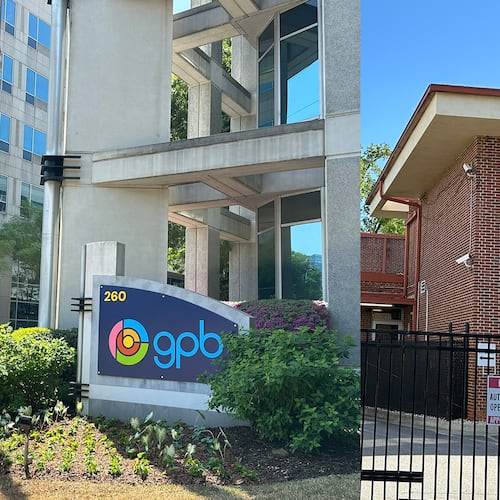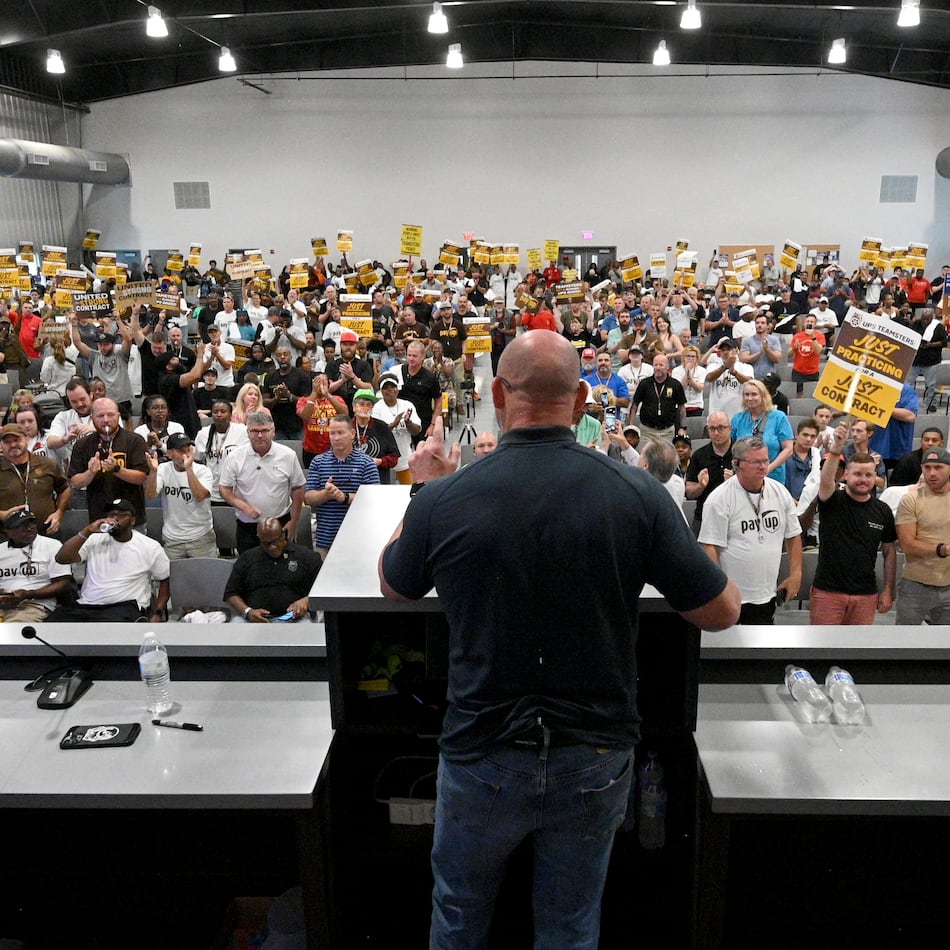Four years ago, when subprime mortgage loans were hot commodities, investors enthusiastically bought pieces of a pool of 5,500 mortgages that covered $984 million in homeowner debt.
At the time, the Bear Stearns Asset Backed Securities I Trust 2005-HE10 seemed like a promising opportunity for strong returns.
When they bought into the pool, investors acquired the mortgage of Johnnie and Lillie Bussie of south Atlanta and many others like it. Facing a tax lien on their tidy brick ranch house in 2005, the elderly couple decided to refinance their fixed-rate note.
They left the closing with two loans: one with a rate that would adjust after two years, and the other, a second mortgage — a 15-year balloon note at the rate of 10.5 percent.
The deals turned out to be a financial suicide pact.
The Bussies couldn't afford the new loan and are being threatened with foreclosure. The investors in the pool own a dud: Payments on 48 percent of the debt in the trust are delinquent. And Bear Stearns, the storied global investment bank that brought borrowers and investors together, collapsed as one subprime investment after another went bad.
Similar financial deals continue to self-destruct by the thousands across metro Atlanta every month. To assess in detail the causes and costs associated with the mortgage meltdown, The Atlanta Journal-Constitution conducted a groundbreaking analysis of foreclosure and mortgage lending data in every neighborhood in a 13-county area.
The study discovered that subprime loans like the Bussies' proved to be time bombs that were destined to explode. The prevalence of those loans was by far the strongest predictor of which Atlanta neighborhoods would suffer the most in the ongoing foreclosure crisis.
The AJC's study found that no part of Atlanta is immune. But dozens of neighborhoods, stretching from Clayton to Gwinnett to Hall counties, have emerged as particularly troubled hotspots.
The Bussie's neighborhood is among those hit hard. Sixty percent of recent mortgages in their neighborhood were subprime, and one in seven recent mortgages was hit with a foreclosure notice last year, the AJC found. Across the couple's 30315 zip code, average home prices in 2008 dropped by 57 percent from the previous year.
In one-sixth of Atlanta neighborhoods, the foreclosure problem is almost as bad — or worse. In those 100 communities, at least 1 in 10 recent mortgages failed last year.
The AJC's analysis tested the influence of a variety of factors that could have played a role in a neighborhood's high foreclosure rate. But the incidence of subprime lending far outpaced the others — including income, home value or race — as a predictor of foreclosure patterns.
In the neighborhoods with the highest foreclosure rates, half of recent mortgages were subprimes, the AJC found. Elsewhere, fewer than a fourth of recent mortgages were subprimes.
Homeowners were attracted to subprimes by cheap introductory payments and promises that a refinance would avoid unaffordable payments in the future. Investors across the globe were wild about subprimes too.
"The money was chasing the borrowers, instead of the other way around," said Georgia Tech professor Dan Immergluck, a national expert on subprime lending and foreclosure patterns.
Those deals became suicide pacts not just because subprime mortgages came with rates higher than prime and borrowers tended to have less-than-perfect credit. Subprime borrowers and investors bet heavily on rapidly rising home prices and cast aside the basic rule of lending: making sure the borrower could afford to repay.
"Basically, underwriting rules were thrown out by subprime lenders," Immergluck said.
While the seriousness of the mortgage meltdown became apparent more than a year ago, its consequences continue. Foreclosure actions in the metro area were the highest ever in March and April. A study co-authored by Immergluck found that a house loses almost 1 percent of its value for every foreclosure that occurs within one-eighth of a mile.
"We all suffer in this crisis," said Frank Alexander, an Emory University law professor who is a foreclosure expert.
To assess metro Atlanta's mortgage meltdown, the AJC studied federal mortgage lending data and local foreclosure information compiled by Alpharetta-based Equity Depot Inc. The newspaper's analysis drilled down to the census tract level – neighborhood groups of about 4,000 residents.
Among the study's findings:
» Subprime lending is driving the foreclosure surge. The presence of subprime loans, by itself, explains 70 percent of the differences in foreclosure rates among census tracts.
» Three other factors also pushed up a neighborhood's foreclosure rates: lots of investor-owned properties, lots of second mortgages, and mortgages that ate up a relatively large portion of a homeowner's income.
» Race, by itself, is not driving up foreclosure rates in minority neighborhoods. Minority neighborhoods are experiencing higher foreclosure rates because black home loan applicants were more than twice as likely to get high-interest loans as white home buyers. After accounting for who received high-cost mortgages, the impact of race on foreclosure disappears.
» For black applicants, higher incomes didn't improve their chances of getting prime loans: 58 percent of black applicants in the lowest income group got conventional loans compared with 60 percent in the highest income group.
» Congress passed a law in 1994 requiring greater disclosures to consumers taking out high-rate, high-fees loans. But the standard defining such loans was so high that it did virtually nothing to protect home buyers. It affected only 351 of about 200,000 subprime loans made in metro Atlanta from 2004 to 2007.
A couple's dream home
Johnnie Bussie, 74, and his wife Lillie, 80, bought their first house a decade ago. Bussie, who said he left school in the fifth grade, worked until retirement for the city of Atlanta. Lillie worked as a nanny and housekeeper. Their two-bedroom, one-bath dwelling on a quiet street off I-20 is a cheery house filled with floral arrangements and brightly-painted walls. There's a cactus garden in front.
"It was my dream house when I saw it," Lillie Bussie said.
The couple refinanced their fixed-rate mortgage in 2005 and thought they replaced it with a new, fixed-rate loan. What they got was much more complicated: the first mortgage had a rate that was fixed for two years and adjustable thereafter, with a ceiling of 12.15 percent; the second mortgage as part of the deal was a 15-year balloon note at a fixed interest rate of 10.5 percent.
"These exotic mortgage products didn't make any sense for them at all," said Sarah Bolling, an attorney with Atlanta Legal Aid now representing the couple. Atlanta Legal Aid helps low-income borrowers take on mortgage lenders.
The couple say they can't remember exactly how they got involved in the refinance. The transaction paid off $1,897 in tax liens, but was otherwise a straight refinance of their existing loan with no cash out. The Bussies said they were rushed through the closing and told to sign without much explanation of the terms.
The loan included features that Congress may soon ban: a prepayment penalty and a "yield spread premium," a bonus usually paid by to a mortgage broker by a lender for putting a borrower in a loan that is more expensive than what they could have qualified for.
The Bussies soon realized the mortgage wasn't what they thought it was.
"I just wondered why my mortgage kept going up and up," Johnnie Bussie said. "I got to where I couldn't buy groceries."
The couple got so far behind that loan servicer EMC Mortgage planned to sell the house on the courthouse steps last March.
When the experts say that subprime lenders threw out the underwriting rules, they are talking about loans made to people like the Bussies – senior citizens on a fixed income who plan to spend the rest of their lives in the house. The loan wasn't affordable on the Bussie's gross income of about $2,400 a month.
"They didn't get any benefit at all from the transaction," said Bolling, their attorney. "It had everything to do with the investment banks filling up the pools with the kinds of mortgages they wanted on that day."
A spokeswoman said EMC did not originate the mortgage and declined to comment on its current status. The loan was made by SouthTrust, now part of Wachovia.
As with most modern mortgages, those who put the deal together had no financial interest in its success, since the loan was sold to investors in a Bear Stearns pool.
The prospectus for the pool discloses that a substantial portion of the mortgages were issued using "alternative documentation" for income, meaning a statement of income or no income documentation were accepted.
Johnnie Bussie said he wishes he had understood the terms of the mortgage. His mistake, he said, was "not getting somebody to look over them papers before I signed them."
High foreclosure rates are more common in minority neighborhoods like the Bussie's than in Atlanta's mostly white communities. That's because black Atlantans were so likely to end up in subprime mortgages.
Among black Atlantans who closed on mortgage loans between 2004 and 2007, 42 percent got subprime loans, compared with 16 percent of whites. Upper-income blacks were more likely to get a subprime loan than low-income whites.
'Mortgage madness'
The problem isn't isolated to minority neighborhoods.
Gloria and Langdon McAlpin, whose Loganville house sits on metro Atlanta's eastern edge, also faced foreclosure this year after taking out a subprime loan five years ago.
The McAlpins bought their house in 1990 for $108,000 after Langdon, a veteran Decatur police officer, was struck by a vehicle while directing traffic and left disabled. In 2004, they refinanced to wrap their car payment into their mortgage.
Their initial payment: $888 a month. They say they requested a fixed-rate mortgage and were upset to see the lender had prepared papers for an adjustable-rate loan. But they were told they could refinance in two years into a fixed-rate loan and enjoy lower payments in the meantime.
They agreed.
By August 2007, adjusted rates increased their payments to $1,316. The payment including escrow was $1,576. The lender approved the loan based on Langdon McAlpin's gross monthly income of $2,039. Gloria no longer works.
The couple resorted to desperate measures to try to keep up. She pawned her wedding ring, while he sold cherished ham radio equipment. They ran out of money for groceries. "We borrowed from friends," she said.
They couldn't work out a solution with the lender. Their home was scheduled to be auctioned in November and again in March. They filed for bankruptcy protection to stop the foreclosure. An attorney from Atlanta Legal Aid is trying to work out a settlement with the lender.
"None of this would have happened if they would have properly evaluated the income," said Bill Brennan, the couple's Atlanta Legal Aid attorney.
Brennan is one of the nation's leading mortgage lending experts and warned for years that subprime lenders were routinely making unaffordable loans. "Bear Stearns put the word out to mortgage companies — "We've got pools to fill,'" he said.
Like the Bussies' loan, the McAlpin mortgage was grouped with other subprime loans and sold to investors. The most recent report to investors shows payments were at least 30 days late on 43 percent of the debt in the pool over the past year.
Brennan wants the lender to reduce the balance on the loan and convert the loan to a reverse mortgage, which would allow the couple of keep the house. "The McAlpins and the Bussies should not lose their homes because Bear Stearns descended into mortgage madness," Brennan said.
Picking up the pieces
Almost everyone agrees that lenders and borrowers failed to police themselves.
Immergluck, the Georgia Tech professor, said lenders should be required to retain some ownership stake in mortgages they extend so they have an incentive to arrange loans that are likely to succeed. And he said lenders must resume the role of purveyors of financial restraint. Relying on borrowers to make sure they are agreeing to affordable loans simply didn't work, he said.
"Because the costs of failure from foreclosures are so high, not just personally but publicly, we can't have a system that relies on anybody's honesty," he said. "The underwriting decision is supposed to be the lender's, not the borrower's."
The crisis itself has stopped the sort of lending that was going on when the Bussies and the McAlpins signed their loan papers. Now, lenders make sure that borrowers can afford their mortgages over the long term.
"We want Americans to have a home, but we want Americans to afford the home and stay in the home," said Scott Talbott of the Financial Services Roundtable, a trade organization that includes lenders. "The challenge is that means fewer Americans qualify for a mortgage."
Many experts believe the bulk of the subprime loans that were going to unravel already have. Now, they say, it's time to pick up the pieces.
When Johnnie Bussie and his wife started working to resolve their mortgage dispute, their house was appraised for $125,000. Now they're told it might be worth only half that much, making a settlement even more complicated.
Bussie has given up on a big part of the American Dream — building a nest egg through home equity. He just wants to hold onto the roof over his head.
"Everywhere you go you be seeing houses for sale and going through foreclosure and all that," he said. "They don't realize we got to have somewhere to stay and they don't care."
About the Author
Keep Reading
The Latest
Featured



